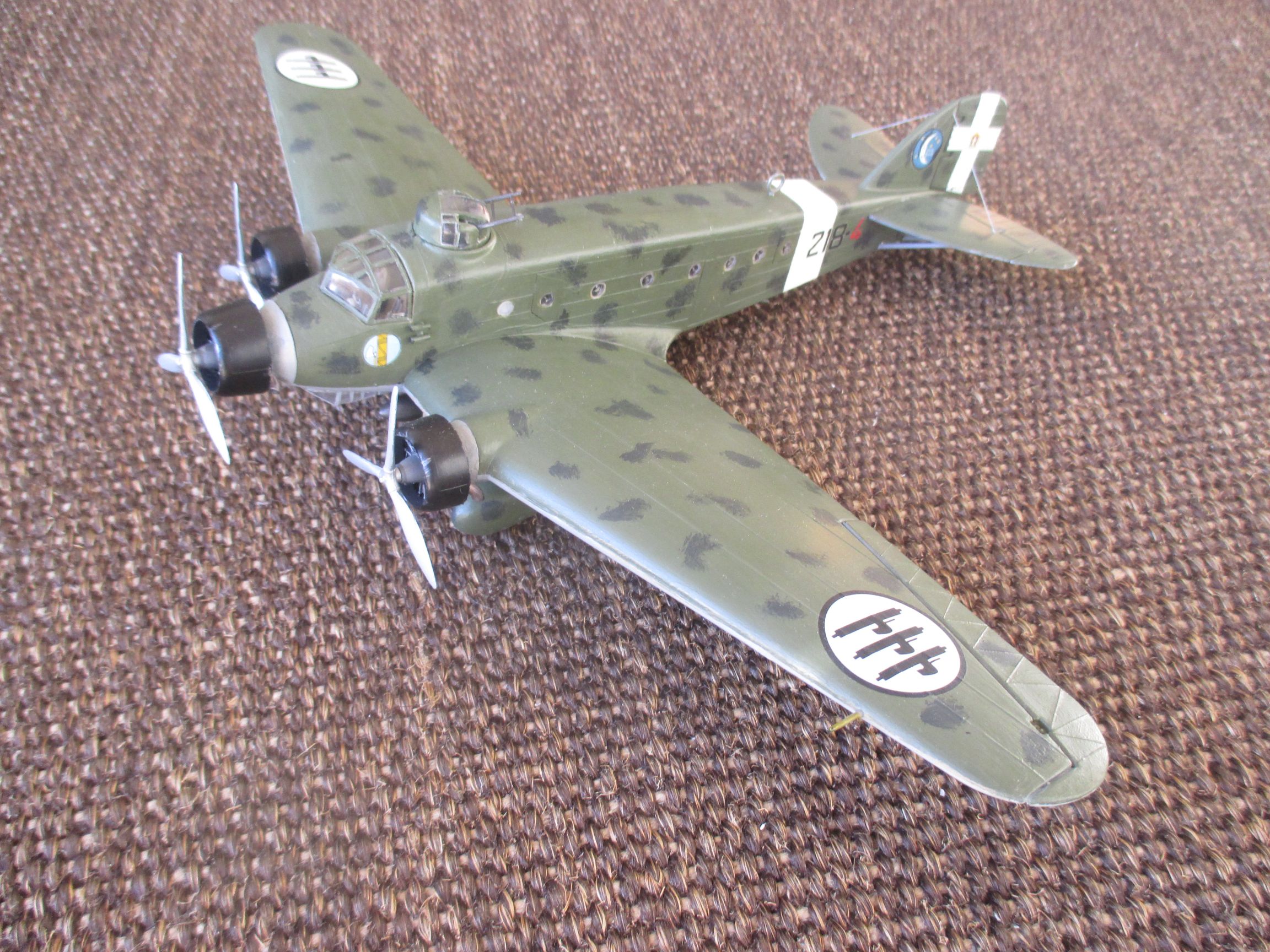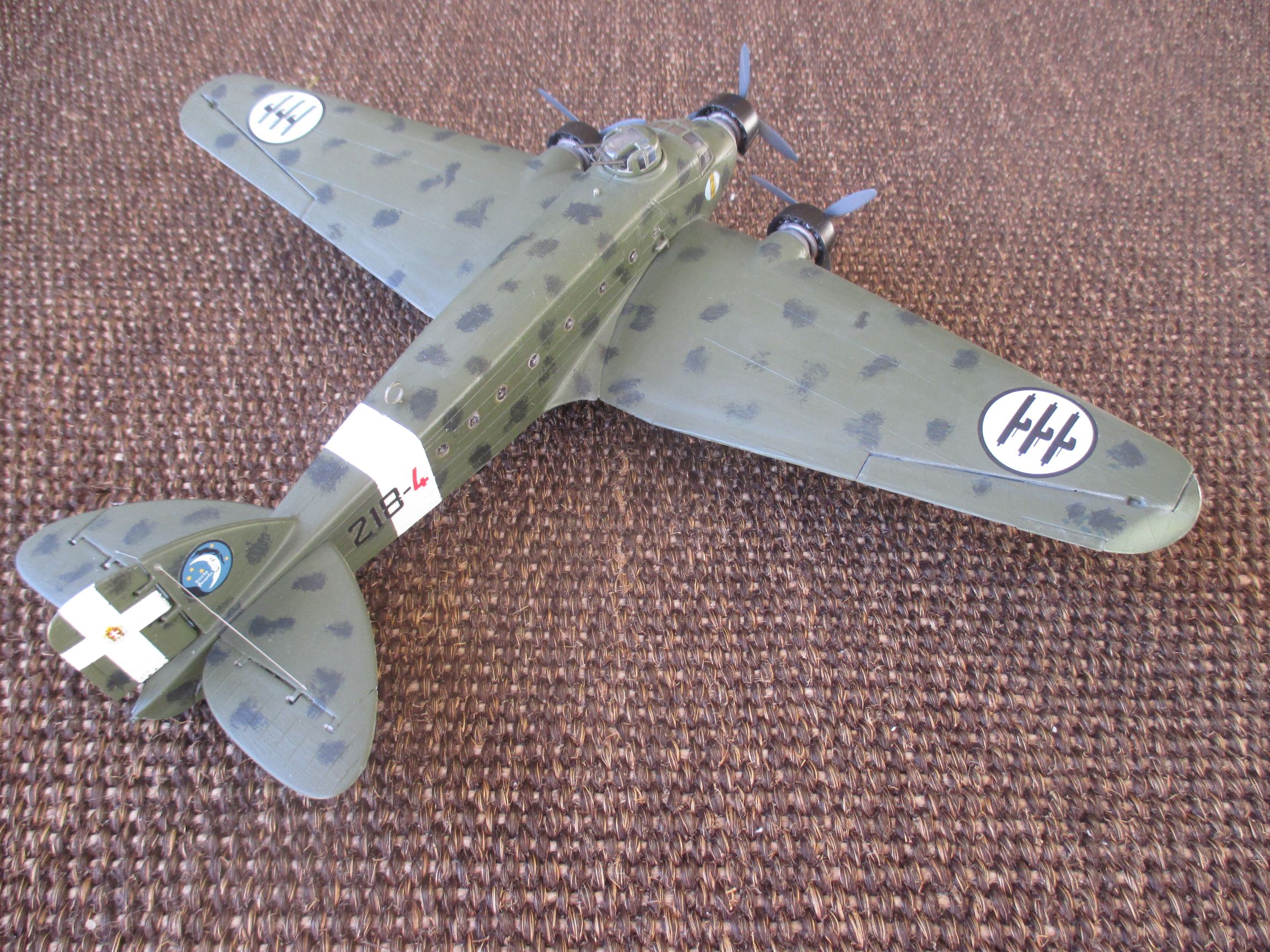Model of the month March 2023 Savoia-Marchetti
The Savoia-Marchetti S.M. 81 „Pipistrello“
From the original to the model
An independent part of the collections of the Aviation Museum Hannover-Laatzen are the more than 1,000 scale models, mainly of the international standards 1/72 and 1/48.
Such true-to-the-original miniatures enable viewers of museum technology history to gain an "overview", not only of the individual exhibit (sometimes even as the only possibility of a three-dimensional display if there is no longer a preserved original), but also of the developmental lines of aircraft construction by means of the possible sequencing and juxtaposition here; sometimes they even close gaps in the presentation of the originals. Their craftsmanship alone is a pleasure to behold.
Translated with www.DeepL.com/Translator (free version)

Heute stellen wir Ihnen in unserer Reihe ´Modell des Monats´ das dreimotorige Kampf- und Transportflugzeug Savoia-Marchetti S.M. 81 „Pipistrello“ (Fledermaus) von 1935 vor; weitere Beispiele des einst höchst renommierten italienischen Flugzeugbaues finden sich in verschiedenen Vitrinen der Ausstellungshalle 2.
The model: Challenging as well as beautiful
Our 1/72 kit with 126 parts and decal set is by now 50 years young. It was produced by the Italian manufacturer Supermodel in 1973, the manufacturer has long since disappeared from the market. It was quite a challenging kit at the time, which required active thinking as well as some rework here and there, but rewarded this with a detailed and quite exclusive aircraft model. Either an early and colorful version with Piaggo P.X radial engines or a later torpedo bomber in camouflage paint with engines from Alfa-Romeo could be created. Our model shows one of those.

The Original: Old School - The S.M. 81.
The three-engined Savoia-Marchetti S.M. 81 bomber emerged from a passenger and transport aircraft and was (despite a higher type number) the direct predecessor of probably the best land-based torpedo bomber in WWII, the S.M. 79 "Sparviero" (Sparrowhawk).

Very similar in appearance to the German Junkers Ju 52, the S.M. 81, still of mixed construction with rigid landing gear, fabric-covered wooden wings and metal-grid fuselage, it was "old school," but in both technical design and tactical profile it was the model for the more compact and optimized S.M. 79 design with retractable landing gear that followed it.
With a length of 18.30 m and a wingspan of 24.02 m, it had a maximum weight of 10,000 kg, and a maximum of 6 MGs of 7.7 mm caliber formed its defensive armament. In 1935 the aircraft, with its two weapons turrets on both the upper and lower fuselage sides, was a very advanced design and was used successfully in the Italian colonial wars as well as in the Spanish Civil War. With Italy's entry into World War II in 1940 however, the six-seat S.M. 81 quickly became technically obsolete as a day bomber and, in addition to reconnaissance missions, it was assigned primarily to night missions - hence its nickname "Bat" - and test commands. The torpedo trials in particular paved the way into very successful anti-ship missions of the S.M. 79.

Finally, the S.M. 81 returned to its roots and, after the partial capitulation of Italy in 1943, still flew as a cargo carrier for both sides. Even after the end of the war, some of the 535 aircraft built remained in troop service with the new Italian Air Force for a short time.


Could we arouse your curiosity - Then we would be pleased to welcome you in the Ulmer Straße, opposite the Hannover exhibition grounds!
sb
